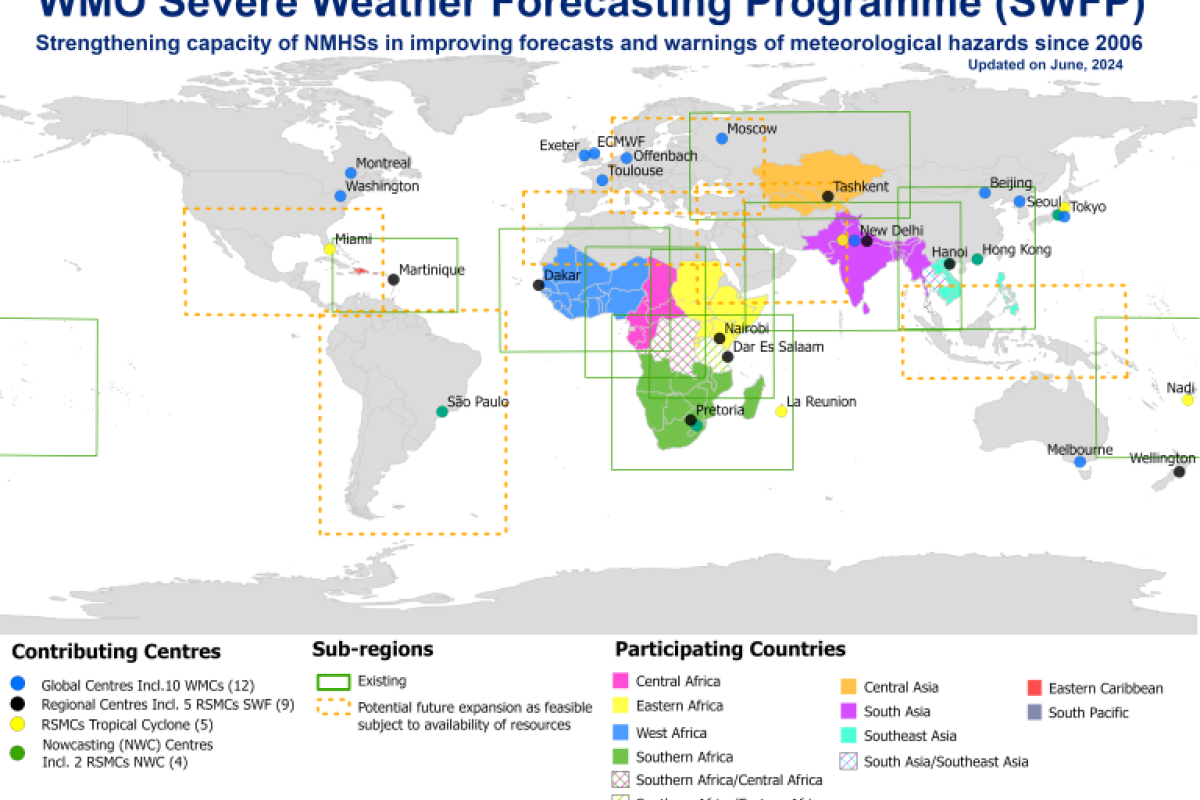
The WMO Severe Weather Forecasting Programme allows to improve forecasts and warnings of severe weather to save lives and livelihoods, and protect property and infrastructure. SWFP currently involves around 85 developing countries in nine sub-regions of the world including Southern Africa, Eastern Africa, West Africa, Central Africa, South-East Asia, South Asia, Central Asia, Eastern Caribbean and South Pacific, with contributions from the WMO Integrated Processing and Prediction System (WIPPS) and support from development partners and donors. In support of UN Early Warnings for All (EW4All) initiative, SWFP is being scaled up to expand its geographical coverage to more sub-regions and countries, and to facilitate improved tools and guidance products for the NMHSs to improve their early warning services. Recently, SWFP-Eastern Africa has been expanded to benefit more countries and SWFP implementation has also been initiated in Central America and Southeastern Asia-Oceania subregions. SWFP makes efficient use of the “Cascading Forecasting Process” (from global to regional to national level) with contributions from the WIPPS centres. SWFP, in collaboration with Public Weather Services (PWS) activity, has also been focusing on developing capacity of the participating countries on impact-based forecast and warning services (IBFWS) for improved decision-making, i.e. to deliver potential effects of forecast weather on users and stakeholders. SWFP contributes to several WMO long-term goals & strategic objectives.
Governance
SWFP belongs to the Commission for Weather, Climate, Water and Related Environmental Services and Applications (Services Commission or SERCOM) at WMO, and is overseen by the SERCOM Standing Committee on Disaster Risk Reduction and Public Services (SC-DRR) with assistance of Advisory Group on Severe Weather Forecasting (AG-SWF).
SWFP Guidebook
The SWFP Guidebook is under review by the SC-DRR Advisory Group on Severe Weather Forecasting (AG-SWF).
However, guidebook's older version when SWFP was a 'Demonstration Project' (i.e. SWFDP) is available below:
- SWFDP Guidebook on Planning Regional Subprojects (2016) (English version; French version; Russian version; Spanish version)



